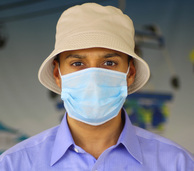|
The Chi Lin Nunnery, and the Nan Lian Garden are two neatly hidden gems in the tranquil surroundings of Diamond Hill’s myriad of high-rise apartments. The sites are sadly not visited by many foreign tourists, despite being listed as one of the premium tourist attractions in Hong Kong. Before the handover to the British in 1996, this part of Hong Kong was close the approach path into the former Hong Kong Kai Tak Airport, and so was frequented by the noise of low flying aircraft overhead. Nowadays the site enjoys the sounds of the kingfishers and other small birds that lurk around the surroundings, and is remarkably quieter compared to the noise of the traffic around Diamond Hill.
The Chi Lin Nunnery was established in 1934 and renovated in Tang dynasty style (AD 618–907) in 1990. It’s a large temple complex made up of elegant wooden architecture, treasured Buddhist relics and soul-soothing lotus ponds. The complex also includes a series of temple halls, some of which contain wooden statues representing divinities such as the Sakyamuni Buddha and bodhisattvas. Occupying an area of around 3.5 hectares, and juxtapositioned next to the Nunnery, the Nan Lian Garden is a public park also built in the style of the Tang dynasty. There are some impressive permanent exhibitions of Chinese timber architecture, rocks, and potted plants. The park also houses an elegant Cantonese teahouse, and a restaurant, which is flanked by an artificial waterfall. The best way to get here is to take the MTR to Diamond Hill, and the site is just outside the entrance of the station. There is no entrance fee. The Durian is commonly known as the 'King of the fruits', and is the only fruit that is banned on-board aircraft, and on the subway in Singapore (because it has a horrible odour). Its not as bad tasting as it looks and smells. Mostly found in South-East Asia. People in China love the Durian and use it as a vital ingredient for desserts.
Opened to the public around the latter part of 2006, Coastal City is a nice modern shopping area in Shenzhen's Nanshan District. But you would never know that before it was built this land was all part of Shenzhen Bay, and the surrounding seabed. There was nothing here except pebbles, sand and water. The roads, luxury shopping mall, and the Kempinski Hotel Shenzhen are all built on the former seabed. This is where Shenzhen's new Middle -Class come to while away their evenings to dine and wine at fine restaurants!
Herbal tea is very popular in Guangdong Province. It tastes bitter (can be sweetened), and looks like coca-cola. The ingredients of herbal teas are mainly fresh dried flowers, leaves, seeds or roots, and grains. There is one particular drink that is made from extracts taken from a version of grass. Like most other interesting types of food that you get in Guangdong Province (inc. meat products), herbal tea is meant to be very good for your health, and contains a remarkably high amount of antioxidant properties.
You'd be surprised how many people don't know that in some parts of China the cost of living is more expensive than in the West (they laugh when I say that sometimes), and you'd be equally surprised at how little knowledge most people have of China's global super power status in the world. I spend most my time myth busting because most people in the West (esp. Europe) still have the wrong stereotypical negative image of the country and its people in their minds. I recently came across a highly educated Romanian (Cambridge graduate) who for some reason kept on complaining about everything to do with China. She kept asking me questions such as: Do people ride bicycles in droves there?, Do Chinese eat weird food?, Do they have shopping malls like we do here? Do they have ATM machines in China? Whats the food like? I heard they eat all kinds of meat? and so on. She even mimicked the Chinese accent at one point. It didn't take someone to be Einstein to work out that she was totally unaware of the culture, and at some point came across as xenophobic.
Most people even compare China with India, which I think is wrong because there is no India-China competition. Though I have not been to India since 1998 (I am not an Indian citizen for those that don't know), but having spoken to many people (including native Indians) who have been to India, I can tell you that economically China is perhaps a few decades ahead of India. In my opinion, it would be an impossible task for a country like India to be as successful as China because of many factors including religion in India. Without being stereo-typically negative, the Indian culture comes across as being too conservative/closed compared to China, and that's something that cannot be changed (and should not be changed of course because every country has their own ways of living a life, and that's the beauty of life). Of course there is a gap between the filthy rich and the desperate poor in China, however the good thing is that everybody gets their bowl of rice. In fact, to think of it, I have come across more people that are homeless and begging on the streets in European cities than I have in China. In some ways London itself does feel like it is the Western version of a 3rd world country because of its poor over used infrastructure (try taking an overcrowded commuter tube/bus/train in London with no air-conditioning!). It's only when you live in China you realize that the West is lagging behind in terms of infrastructure, quality of life, and economic stability. If you happen to walk in a place such as Shanghai, you'll see that most of the middle class Chinese women are all carrying a Louis Vuitton bag (real not fake!), or wearing Prada glasses, and Gucci shoes. Shanghai really does feel like the Paris of the East. In some of the affluent parts of Shanghai or Beijing if you happen to walk into a Starbucks or a shopping mall, and you happen not to wear any designer clothes then you are not in (yes, it's that important of a status symbol). I am not a generalist, and not a fan of stereotyping...however it would be somewhat of an accurate observation to say that the typical Middle Class Chinese person probably drives a Maserati or a Mercedes, learns English at Wall Street English (where prices start from around RMB 40,000 for a one year English language learning course!), loves their Starbucks coffee every morning, loves treating themselves to a good Steak meal at a top 5-star hotel, owns an expensive DSLR camera/s, and loves spending money to shop for designer clothes. In my opinion Shanghai is more expensive than London to some extent (depending on where you live and what your cost of living is). For example, to rent a decent one bedroom accommodation in a nice part of Shanghai (Pudong or downtown Puxi) it costs around at least RMB 7,000 a month (that's about GBP 760, or around USD 1140 a month). Taking a taxi or public transport is still relatively cheaper in mainland China than in London or Hong Kong (taxi rates start at around RMB 14 for the first mile). However, the cost of weekly shopping and eating out at a restaurant might be almost the same as in Hong Kong (though Hong Kong food is more expensive than London sometimes). If, for example, you are going to eat in Xintiandi (trendy fashionable place), then for example the cost of a giant plate of food and a nice glass of wine costs the equivalent of about £15.00. But hey, if someone has lived in somewhere like Sweden, then China wouldn't give you any physical pain every time you come here!. China's growing abundance of modern infrastructure contains numerous 5-star hotels (some have amazing architecture), world-class international schools (Dulwich College Suzhou for example), large number of airports, and so many other impressive things that are modern and clean - it makes the United Kingdom look like a Western version of a 3rd world country (no wonder why the former PM Tony Blair pays monthly visits to meet the CEOs of Chinese banks!). In some parts of the country, life comes across as being so much better than anything I have come across in Europe that it would make any other global economy envious. The fact is that Europe and America had their time of growth after the World Wars, now its the turn of Asian economies to grow. This, flamboyancy, of course, does have its kickbacks and downsides. The biggest myth that derives from is that many Western business persons immediately think: 'If I go to China then I can become financially successful!'. While it always doesn't end up like this (read this), it is true that in the long run, China is the place to be in. That's where the future is, and that's where the money is (in my opinion). On the 14th of June, the Airbus A350 XWB (Extra Wide Body), made it's maiden flight captained by Airbus Chief Test Pilot, Peter Chandler. The Airbus A350 XWB is a family of long-range, two-engined wide-body jet airliners. The A350 is the first Airbus aircraft with both the fuselage and the wing structures made primarily of carbon fibre-reinforced polymer. I am in China, and I just thought I'd share this link while I am here. When you watch this, preface it with the knowledge that an Airbus A330 flight test team were killed during a test flight in 1994. It looks like a normal airliner..but you can never tell until it flies successfully. Check out the video below. It's addictive and goes well with any spicy Chinese cuisine. This particular brand is so popular that I wouldn't be surprised if it ends up being bought by a major multinational as China continues its quest to spread it's country's brand across the globe!
From my experience, in China if a vehicle has been involved in an accident (either in a crash or has broken down due to mechanical failure for example), then the driver will seldom move the car to the side of the road, Instead what you normally find is that the damaged vehicle will remain at the exact spot where the accident happened until the police arrive. While this may be a good thing when trying to claim back insurance (and proof for the police), it sure is an annoying and excruciating experience for the other drivers who have to wait for the drama to unfold. Took this photo from the Horizon Club at the Shangri-La, Shenzhen. The taxi on the far left has broken down, and the driver only moved it to the side once the police arrived about 35 minutes later! I'd be interested to know if other countries experience this type of situation too.
One of the key advantages for expats living in Shenzhen is that you can hop across the border to Hong Kong for a day's trip or two. Back in 2003 when I first arrived in China, crossing the border into Hong Kong from Shenzhen (and vice-versa) was a somewhat long, and tiring journey. The only two border crossings in those days were at Lowu and the limited ferry service from Shekou port in the west of the city. For expats living in Shenzhen (and in Guangzhou, Dongguan, Zhongshan, and Zhuhai), it's like a mini-holiday and a treat to get away from the hustle & bustle of daily life here. While crossing the border can be an excruciating experience at peak times, thankfully there are two more options to cross the border that can make it a slightly less tiresome experience (Huanggang, and Nanhai are the two extra border ports). I am sure there are plenty of border crossings around the world where the cultural differences are so extreme and far-fetched, yet they are so close together geographically. The Hong Kong-Shenzhen border is no exception (as is the same with the Macau-Zhuhai border). One of the main differences is that Hong Kong still feels more international and Westernized compared to Shenzhen- though the gap between the two is closing in as mainland China's economy is booming compared to the former British colony. In Hong Kong it's still common to come across some expats (mostly British obviously) who have not gone back to the UK after the handover to the Chinese in 1997, and consider Hong Kong to be their only home. Another striking difference that one can see if that Hong Kong feels more Chinese now (and quite rightly it should do in my opinion) than before. There are a large numbers of mainland Chinese people in Hong Kong, and this is causing a few frictions in that some Cantonese people are not accepting the fact that Hong Kong is not British anymore (it's true). I can feel a STRONG sense of xenophobia by Hong Kong natives towards their mainland countrymen and women. I have seen quite a lot of comments on various western social websites of HKG people (of all races) complaining about foreigners in general (of all races and nationalities). One particular specimen wrote: 'I miss the HK I grew up in...sigh!'. A trans-cultural British-Born-Chinese friend of mine told me that he agrees that its time for the Chinese to rethink their plans for Hong Kong. However this is no time for nostalgia, because trends come and go here just like in every major city around the world (London is no exception, and I am seeing this xenophobic behavior in Shanghai as well against the large number of foreigners that are coming to experience the 'China Dream'). One friend went on to say that 'Hong Kong people are a rare breed in this Chinese world when Hong Kong people are being displaced themselves'. He is, of course, referring to local Hong Kong people being made a minority. Mainlanders are sadly discriminated against in Hong Kong, just like the Filipinos, Indonesians, and the Thai people are. From my own experience I could say that the Filipinos are so used to lying all the time, and it gives them a bad impression in the eyes of others- its ridiculous. This is partly due to culture and their bad government. They are a people who have gone through some very hard times in their country's history, and they rely on other countries. However on a good note this is changing for the best. Without being stereo-typically negative, the reality is that in places such as Hong Kong (and Dubai, Singapore among others), sadly most of the Filipinos have been known to be sex workers, house maids, selling services, ripping money off tourists, and finding a western boyfriend (go to Wanchai and you'll see). For a native Cantonese Hong Kong person to make many Filipino friends in Hong Kong is unheard of because of the terrible negative perception that they are domestic/sex workers and will be treated as such by society (read THIS for more on racism in HKG- my viewpoints). However, from my perspective Hong Kong people somehow have to work with their Mainland cousins, and not against them to build something that works with both Hong Kong and China. But on the other hand, it's just ridiculous how the 'one-country two systems' scheme works. For example, just around thirty miles outside of central Hong Kong, and in the mainland, the relationships are fine without any problems. Hong Kong residents and Mainlanders along the border have fought in recent years over hospital beds, baby milk formula, and even the shortage of school places. The question here is, would these tensions and problems of divide have happened if the British were not in Hong Kong? Maybe. It's difficult to say. However, in my opinion (and I am stand to correction...not an oak here!), the queen and mistress of all of these problems could lie with the legacy that the British left behind. Historically speaking, the British (as well as the French, and perhaps the Spanish too), have maintained a rule and divide mentality wherever they have colonized globally, and in Hong Kong it is no different. However, the fact is that Hong Kong is not the same anymore. If there's any city that changed radically since 1997, then it's Hong Kong. Because of the high numbers of rich mainland Chinese people coming to live and work (and shop!), the cost of living in Hong Kong has increased too. This is having both good and bad effects for the economy. You can read about the immigration of Hong Kong people who moved to Canada and Britain after 1997 and then moved back as returnees and you'll realize why there was an influx of mainland Chinese students to exclusive private schools and universities in the UK (Dulwich College, Oxford, Cambridge, Eton, and Harrow for example all saw a surge of mainland Chinese students- before 1997 it was mostly Hong Kong Cantonese students). Most of those graduates are now Doctors, Engineers, Pilots, and so on, and working in the U.K. and U.S.A. for example. A large percentage of residents were from China originally to escape for various unmentionable reasons in 50's to 70's. I've seen loads of changes after 1997, booms and bust, changes mainly because of the mainland. There is more alignment with China now and less with western countries. Yes, original residents miss the old days, but times have change and we should move with it being well informed. Hong Kong has had an identity crisis, its visible on some Hong Kong people, its like the lost generation dealing with constant turmoils. But it's perhaps not as bad as London (but, hey, that's a discussion for another article :-)). On that note, I have an experience to share. Later on in the day, I was walking through Kowloon Park with a British-Chinese friend of mine. The park was full with tourists, as well as large numbers of locals. As we made our way, a scruffy looking beggar approached me, and then started shouting abuse loudly. The stench from the man was not pleasant, and with the heat and humidity it made it worse. I decided not to take a photo out of respect. I turned to my friend and asked him why the beggar was shouting at me. 'He (the beggar) says he hates you because you are a foreigner' explained my friend, and then he went onto say 'he probably ended up in that situation in the first place because of bad experience with gweilos (Cantonese derogatory word for 'foreigners)'. Perhaps I was unlucky to come across such a situation, or perhaps it was a message. The remarkable thing was that just moments before this beggar shouted abuse at me, we were talking about this exact issue. Some people don't see it as a political thing, they believe that people are just doing what you'd expect of them. It's true that Hong Kong might occupy some abandoned premises near the border - and that there is no shortage of teachers, just schools (in regards to the school placement friction). The Hong Kong education dept is not very responsive to news and awaits some senior chap proposing action which seldom happens unless someone at the very top of government pushes them. They tend to see themselves as administrators not originators of policy. It might be a hangover from colonial times. Administrative officers used to get almost carte blanche in their initiatives and devised all sorts of new programmes, some good some bad but all well intentioned. That does not happen anymore. In the meantime, I have to say that it's always a nice feeling to come back to Shenzhen after a long day of burning your plates of meat (i.e. feet) on the steep and tiny roads of Hong Kong. There is no better way to cool down your heels than having a chilled bottle of the locally brewed 'Kingway Beer' at the Horizon Club Lounge at The Shangri-La, Shenzhen- then bask in the sights of the city which is spearheading China’s incredible growth. Odd looking Bananas? Well, actually these are the Chinese variety from Guangxi and Guangdong province. China is the world's 3rd largest producer of Bananas (after India and Uganda), with 10.7 million tons of the fruit produced in the mainland every year. The vast majority of them are not exported, but assist providing an abundance of Carbohydrates (it's also a provider of high levels of Vitamin B6, Magnesium, and Potassium). With each banana weighing on average around 126 grams, and with the average person consuming around 5 pounds of food a day (unless you are a Sumo Wrestler), therefore if my maths is correct, then China produces enough bananas a year to feed 76,318,738,095 people! (considering each ton is around 907185 grams). This country sure isn't short of food :-)
Panamie is a hidden gem in Shenzhen's Nanshan district, close to Gui Mao Lu Kuo (opposite Shenzhen University). Having lived in China for many years, from my own experience I can tell you that the quality of the bread and cakes found at the majority of cake shops here is not the same as you would expect in the West. The lack of high quality baking soda (Sodium Bicarbonate), and yeast makes the cakes taste soggy, feel spongy and too soft, and not rich enough in fiber. You can feel that the texture is not good enough for the Western tongue- it's almost as if the bread melts as you eat it instead of being able to enjoy every bite slowly.
For good quality cakes and pastries one may have to go to a 5-star hotel or your nearest Starbucks (even there the quality of the food differs to that what you may get in, say, Hong Kong). In my experience, the cakes made by Panamie are some of the best, simply because of the high quality of imported ingredients that the owner uses. The bakery is a popular beehive for the local expat community, including many who work as Pilots and Engineers for Shenzhen Airlines, and China Southern Airlines. Every evening, all over mainland China, it is common to come across a group of people (usually from the same neighborhood, and usually middle aged housewives), dancing in rhythm to various kinds of music in parks (or in any open air space, as shown by the photo above). This is, in part to keep themselves fit, but also as a kind of social networking to while away their evenings. Don't be so shocked if you come across a group of couples dancing in a park to tunes such as 'Breathless by the Corrs', or something similar (Celine Dion, Dido, Kenny G, Justin Bieber, and the Spice Girls are all very popular in mainland China!). In contrast, the majority of Chinese senior citizens practice T'ai Chi every morning and evening.
You can bet your bottom dollar that there are plenty of Chinese housewives who are up for giving Justin Bieber a run for his money. In China, when a guest comes to someones home/office etc., the host offers fresh water (usually boiled/warm). It's an honorable thing to do to make them feel welcome on YOUR grounds. Since it is so important in this culture, every house has a water tank which can be refilled. I was quite surprised to see this water refill machine in a small deprived shanty town on the outskirts of Shenzhen- not a place you'd expect something like this to be placed in. It's not expensive though. For 1 RMB (about US 20 Cents) you can fill one tank (about 2 gallons).
Have you just arrived in Shenzhen? If you are looking for a great location that is in Mainland China, however one that is just 30 minutes by the Hong Kong MTR to central Hong Kong then you can’t get any better than the modern Shangri-La, Shenzhen located right at the border crossing. With scrumptious food (both Western and local), a fully-equipped health club, an outdoor swimming pool, and a fully equipped modern gym that includes a Jacuzzi, sauna, and steam rooms, the Shangri-La Shenzhen offers the best personalised service for even the most demanding of customers.
Each of the hotel’s 522 elegant guestrooms and suites come well equipped with all the creature comforts, and essentials of life. These include, but not limited to, complimentary broadband internet access, IDD telephone and voice mail, 24-hour in room dining for the jet lagged of us, and complimentary luxury bathroom toiletries by L'Occitane. Each room proudly presents a copy of ’Lost Horizon’ by James Hilton, the book which inspired the Shangri-La legend and the book that gave way to the hotel’s existence. Having been a resident of Shenzhen for many years, for me it has been a sheer pleasure to witness the rapid growth of this city. The Shangri-La hotel in Shenzhen was one of the first Western 5-star hotels established in the city in 1992, and it’s prime location next to the border crossing and the main train station suited many business and pleasure travellers who were coming over from Hong Kong to continue their journey inwards towards other parts of Guangdong Province. Splendid views of Hong Kong’s Northern Territories, as well as the skyline of Shenzhen’s Luohu district, the most happening place in the city, can be seen from the Horizon Club Lounge (exclusively for Horizon Club members), or from the 360 degree bar, restaurant, and lounge located at the 32nd floor. Back in the 1990s- before China’s rapid economic boom began - The Shangri-La Shenzhen had its head and shoulders held high in the city and it was renowned as the place for luxury and gatherings for A-Listers. However, as time has gone by, the hospitality industry in Shenzhen has become highly competitive with numerous internationally 5-star hotels springing up in the Futian and Luohu districts. One thing is for sure, that The Shangri-La Shenzhen will always be the hotel that everyone remembers as being one of the first and finest luxury accommodations in Shenzhen. The hotel continues to dominate the skyline around the border crossing, and is still a focal point for many to meet at. IN China expats pay a premium for their drug. Anchor Butter bar for RMB24.80 (Approx. USD4), Skippy Peanut Butter jar for RMB31.50 (Approx. USD5.2), and a chilled bottle of freshly imported Birra Moretti for RMB35 (Approx. USD5.7)...the list goes on. Things that we take for granted back in the U.K. and in the West become a once-in-a-while to have luxury in China. Other items include, but not limited to, Nutella, which costs around USD 13 a jar (220g size), and frozen seafood (Salmon fillets were sold for USD 37 at Anon (formerly known as Jusco)).
As far as energy drinks go, this one must be up there in the all-time 'interesting' brands category. Pocari Sweat is a Japanese energy drink that has taken a stake in the Chinese energy drinks market. If you are hiking in hot and humid weather, then this drink may end up becoming your addictive thirst quenching friend. The cloudy colored drink has a mild taste that blends in both the sugar and salt- and effectively it's meant to replace all the sweat that you have lost (and hence is designed to apparently taste like sweat too!!). It's yours for only RMB 4 a bottle on the street (RMB 20 at the airport!).
I love all kinds of edible food from all around the world - except when it comes to anything that smells or looks bad. This includes food such as Durian (the ONLY food banned on planes), and Stinky Tofu (known in China as Chòu Dòufu- a form of fermented bean curd that has a strong odor). The latter is a special case. It's smell is so distinctively bad that you can smell it from quite a distance.
Stinky Tofu is a street food. It is deep fried fresh at hawkers' stalls and at dai pai dongs and sold by the bag. In China there are different ways to cook Stinky Tofu, however is traditionally eaten with hoisin sauce. Remarkably I have lived in China for all these years without even trying the stuff (even as a travel writer I am not that adventurous when it comes to exotic food). In an effort to curb the high levels of pollution caused by the increasing number of vehicles on Chinese roads, one city in China has started experimenting with an eco-friendly taxi that runs on electricity.
Since the beginning of this year, Shenzhen has begun integrating electric vehicles into its public transport with the recent commercial introduction of local auto-maker BYD’s vehicles appearing on the city streets. Named the E6, the vehicle offers enough space for five passengers and has a range of some 160 kilometers. It's quiet, and relatively cheaper to operate (saves around RMB 3 of fuel surcharge). Painted in distinctive blue and white waves running across the vehicle, these taxis cost more or less the same as a conventional fuel run taxi. It also proudly says 'Zero Emission' on the back- not sure if that is to make other drivers become envious. However, they are more friendlier to the environment and may just be the answer that countries like China need to curb the rising number of vehicles on their congested roads. The west could also benefit from such schemes. As I always say- the crumbling Western economies need to learn from the East. Visionary and ambitious plans by the local government are in place to to convert all of Shenzhen’s public vehicular transport to electric – including buses and all taxis – over the next five years. Known as ‘Dragon Boat Festival’ to the west, in fact it’s real name in Chinese is Duānwǔ Jié. The fifth day of the fifth lunar month is a national public holiday in Greater China, and this year it fell on the 12th of June (Wednesday). I was fortunate enough to experience the event in Shenzhen, and Hong Kong. Legend has it that the festival commemorates the death of poet Qu Yuan (c. 340–278 BCE) of the ancient state of Chu during the Warring States Period of the Zhou Dynasty.
Qu was a descendant of the Chu royal house who held a high status government position. However, when the king decided to collaborate with the increasingly powerful state of Qin, Qu was accused of treason for opposing the coalition. Because of this he was subjected to go into. During his time in exile, Qu wrote poetry, most of which derived from his dreams and aspirations in life, and his enigmatic vision for how he perceived the future of the land to be like. Twenty-eight years after his exile started, Qin captured Ying, the capital city of Chu. Out of sheer misery, and anger, Qu committed suicide by drowning himself in the Miluo River on the fifth day of the fifth lunar month. Till this day, that day is noted as the Dragon Boat Festival. The story goes on to say that the local people dropped sticky rice triangles wrapped in bamboo leaves into the river to feed the fish. The rice was wrapped so that fish would not eat Qu Yuan's body and would instead eat the rice. This is said to be the origin of Zongzi- the name given to the triangle shaped sticky rice wrapping. The local people were also said to have paddled out on boats, either to scare the fish away or to retrieve his body. This is said to be the origin of dragon boat racing. Every year on this day, crowds gather to take part in Dragon Boat races, and eat the Zongzi. On the official Dragon Boat Festival day itself, many restaurants around the country offer the Zongzi as a starter before the main meal. If you are looking for some of the best Japanese food in Shenzhen, then head down to Nanshan where there is a tiny lane that contains some of the finest Japanese food and service around town.
Neatly hidden behind the Holiday Inn Donghua in Nanshan (on Nan Hai Da Dao, and opposite Shenzhen Book City, and close to Shenzhen Coastal City- 南山区 海岸城), this quiet lane provides a few restaurants where you can experience authentic Japanese cuisine at its best (complete with strong sake!). Before I left for China, two of my close friends, both of whom have very young babies, asked me to bring baby milk powder from the UK because they did not want to take a risk by giving their babies milk powder that has been manufactured in mainland China (even if the manufacturer is a multinational company). Hence I automatically became an honorary 'Baby Milk Tourist' where a 1/3 of my luggage consisted of baby milk powder!!. In fact the term 'Baby Milk Tourism' is used for Middle Class Chinese parents who are willing to spend money to travel overseas to buy baby milk powder, or import baby milk from overseas. This is in spite of Western supermarkets on the mainland trying their best to build trust by putting up notices to reassure consumers that their milk powder is safe and of a high quality. You only realize how big a news this is once you are in the mainland, and it's very common to see many mainland Chinese people crossing the Hong Kong or Macau borders with tins of baby milk powder in large numbers. Mistrust of baby milk powder is high in China after the death of several babies due to tainted milk powder being sold. Demand for foreign formula has remained high since six infant deaths, and an estimated 290,000 children fell ill in 2008 from tainted local Chinese products. Reports are rife of Chinese baby milk tourists emptying supermarket shelves in Western countries to meet a perceived shortfall of safe formula in China. In the UK most supermarkets put up a ration of maximum 2 cans of baby milk powder being sold*. It's got to a stage where people have realized the long term profitable business potential of importing baby milk powder into China. For example, I was shown one Chinese website that promises to deliver baby milk powder cans to Chinese consumers for a price of around RMB 500 (approx. 82 USD) per can which includes all postage and insurance. To put things in prospective, normally a can of baby powder milk (as shown in photos below) costs around RMB 90 (approx. 15 USD) in most European countries, so you can see that this has become a business opportunity for many. * Source: BBC News Frequent heavy rain and thunderstorms are common at this time of the year in China's Guangdong Province, with an average annual rainfall of around 41mm according to the preliminary statistics. The weather is such that in the late spring and summer months, the weather changes rapidly throughout the day. So for example, at one point during the day you may experience very hot, sunny, and humid conditions, while in the next minute suddenly you may get heavy downpours with thunderstorms (which itself can be a welcome change from the hot and humid conditions). And unlike in some other parts of the world, such as in the United Kingdom for example where public transport and life comes to a halt at the drop of a snow flake, life in China goes on as normal. The west needs to learn from the east! The dramatic change of the weather at such quick pace is one of the reasons why Guangdong Province is uniquely known as the province of umbrellas. The impact of the umbrella is so powerful here (and especially in the provincial capital city Guangzhou) that companies use umbrellas as a way of brand advertising because they know that everyone carries them around all the time, whether it is during rain or sunshine. Indeed, it can be a very powerful PR tool to use. Our flight into Hong Kong was delayed by an hour at least due to heavy thunderstorms, hail, and rainfall in the area around Hong Kong, and Southern China’s Guangdong Region. I took the above photo as we were making our decent into Hong Kong, somewhere between Dongguan and Zhongshan. Indeed, south China is experiencing a monsoon season at this time of the year and areas like this contain unstable air that any towering cumulus cloud can trigger and quickly become Cumulonimbus very quickly. Aircraft (especially commercial aircraft) avoid such clouds by at least 23 nautical miles (about 37 kms) on the upwind side. A typical Cumulonimbus takes less than 20 minutes to build. The most dangerous part of this is that at that particular time it does NOT show on the weather radar. It then becomes active for around 20 minutes (in which 95% of their lighting is internal (invisible in DAYLIGHT), flashing every 90 seconds or so- that can be LETHAL). They dissipate for 20 more minutes, becoming high-level cirrus clouds and low-level stratocumulus before eventually dying away.
It was because of this kind of activity that we had to stack in a hold at 7,000 feet around some 50km outside of the Hong Kong and Macau airspace for around 45 minutes before being given the all clear to land at Hong Kong Chep Lap Kok Airport’s runway. Unfortunately, on June the 1st 2009 an Air France Airbus A330 (flight AF447) flying from Brazil to Paris CDG entered two large Cumulonimbus clouds - one just over 40,000 feet high and then another that was much larger, topping an astronomical 53,000 feet high. The aircraft’s autopilot disengaged, pitot-tube stopped working, and the aircraft went into a deadly stall plummeting into the deep ocean within a few minutes. ALL 228 passengers and crew lost their lives. The key thing to bear in mind is that EVERY Cumulonimbus cloud expends as much energy as 3-10 nuclear explosions in its 20-minute active phase. Therefore, the next time a plane is delayed – don’t panic because it’s probably for a very good reason, and it may just be that your life is saved by the guys in the front office. A spectacular sunset greets us as we approach Nizhny Novgorod (just outside of Moscow) at a
speed of Mach 0.89 (594 mph, 955 km/h, 516 kn), cruising at 37,000 feet. The outside air temperature is around -60ºC Celsius (!)…you just wonder, is it really that cold just outside this window, and are we really flying at nearly 600mph?! |
Get in Touch:LIFE MATTERSHere I share my thoughts
and experiences during my travels, and how some things have affected my life as an expat and world traveller. Travelling is about capturing that moment in life. Every word, view and opinion on this page is that of Navjot Singh - except where indicated. The most recent is at the top. Scroll down to read the archive. Or search using CTRL+F (COMMAND + F) and enter a keyword to search the page. Just some of the stories you never heard before. The NAVJOT-SINGH.COM web blog is separate to this web site....Click blog, which may not be visible in some countries due to local firewall restrictions, so in those cases this weblog may be read. The weblog also includes some of my press trip reports- most of which are not published on the official blog because of copyright issues. The weblog also contains articles that may be associated directly with a PR trip for a country, airline or a hotel. These are PR reviews done in relations with various companies. If you are an investor or a trend watcher then you may find this website useful as investing has a lot to do with personal observations and finding the ideal trend or next big thing. The average human on the street frequently knows far more about the state of the economy than politicians, university professors, subject matter experts, and financial analysts who seldom travel, or if they do so, only from one hotel to another hotel! The pulse and vibrancy of an economy is nowhere more visible than on a country's streets. All photos and words are © Navjot Singh unless stated. Photos taken by others or by agencies are appropriately copyrighted under the respective name. No photo or word/s may be taken without the prior written permission by the author (i.e. Navjot Singh). All Rights Reserved. Archives
April 2024
Categories
All
|




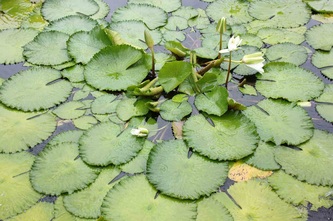
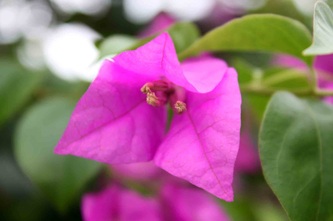







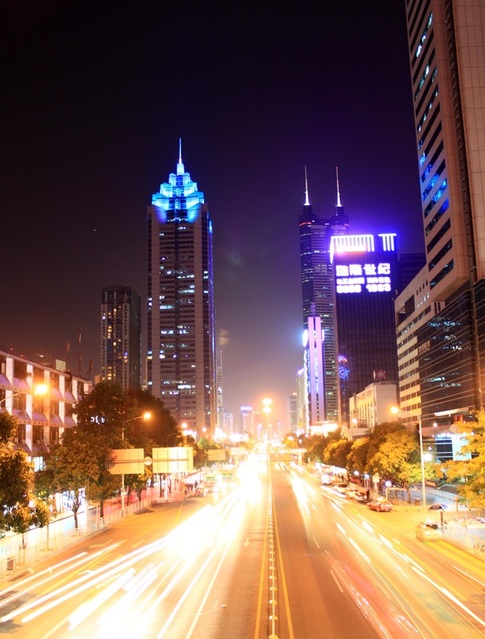



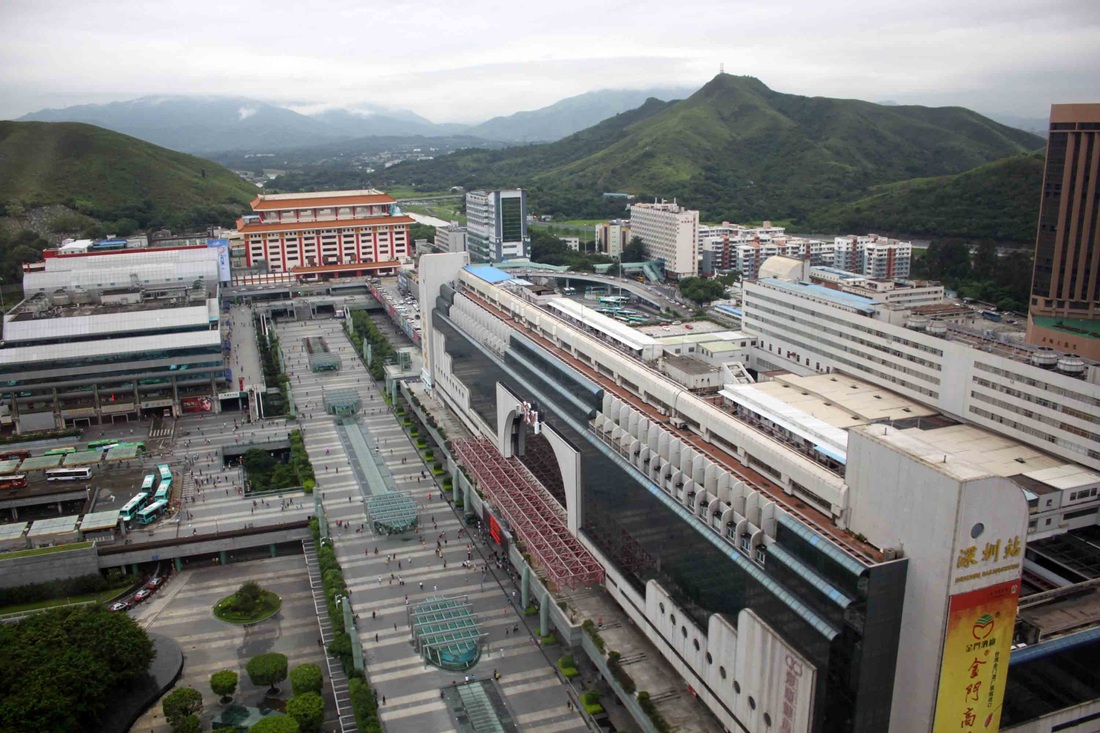





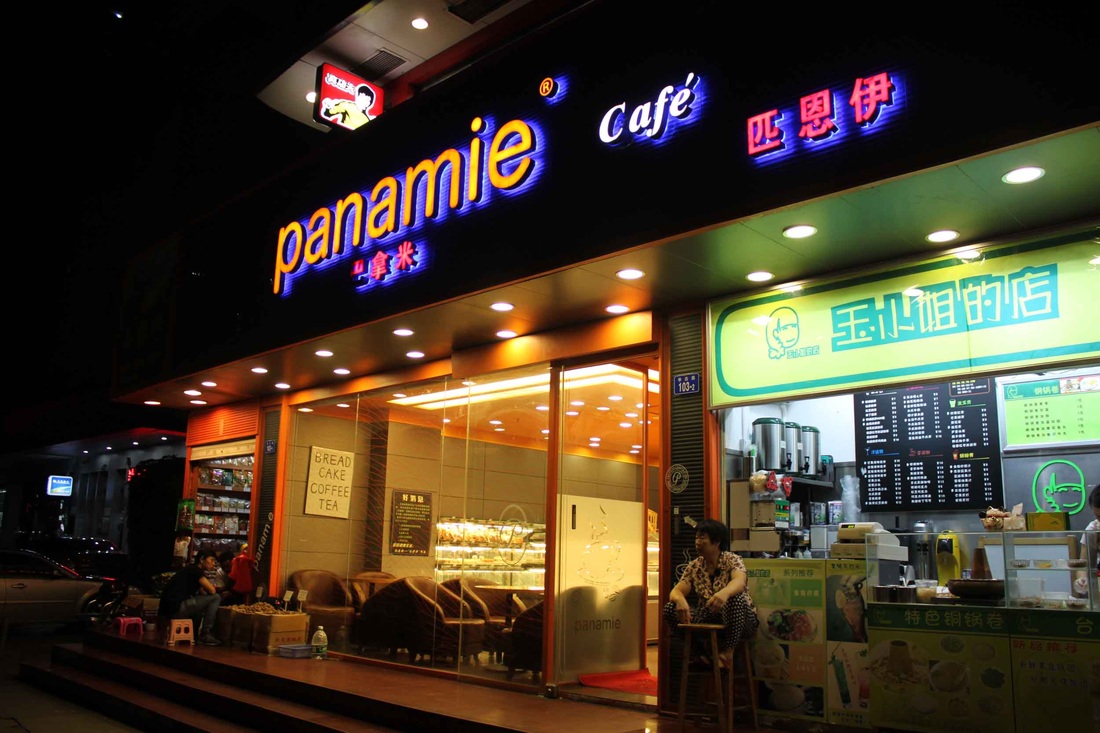

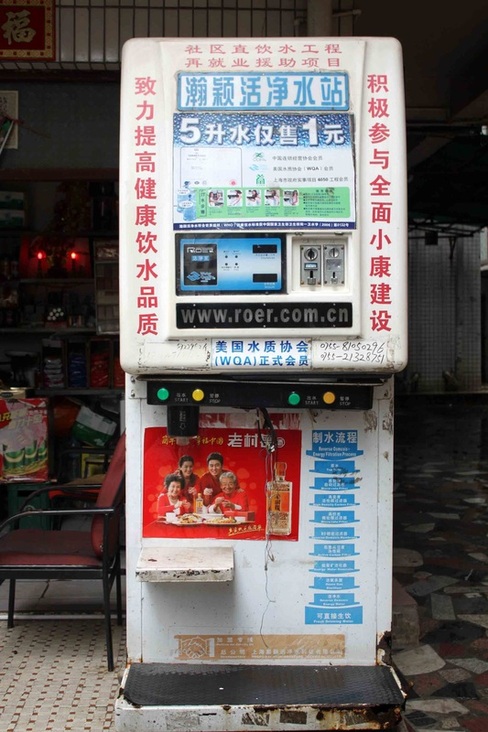


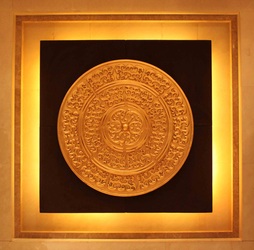


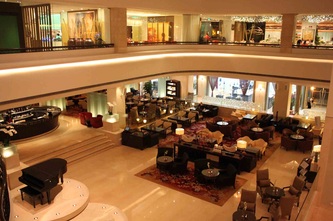
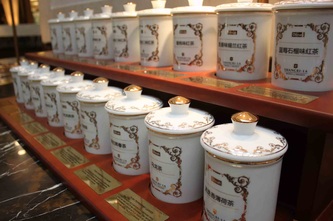








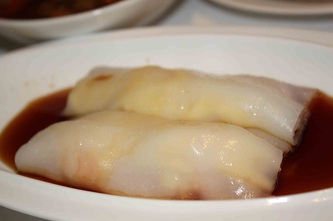

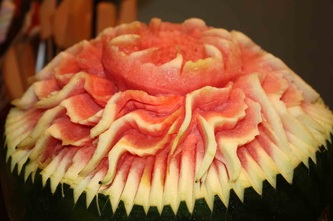



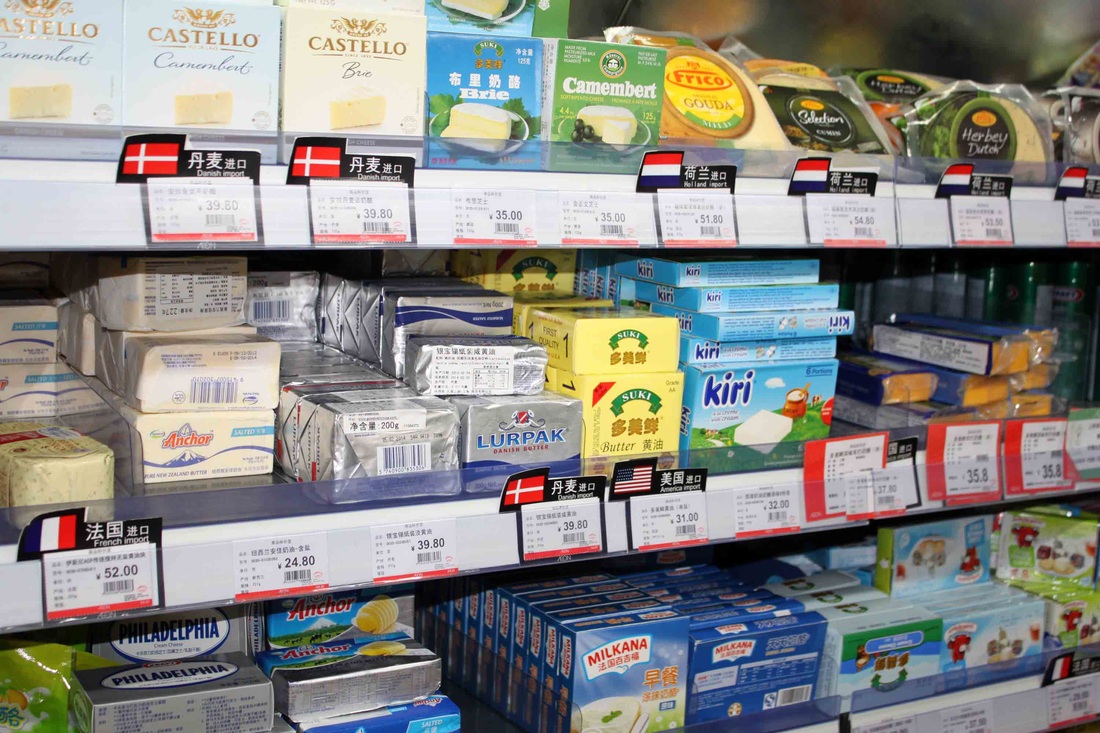



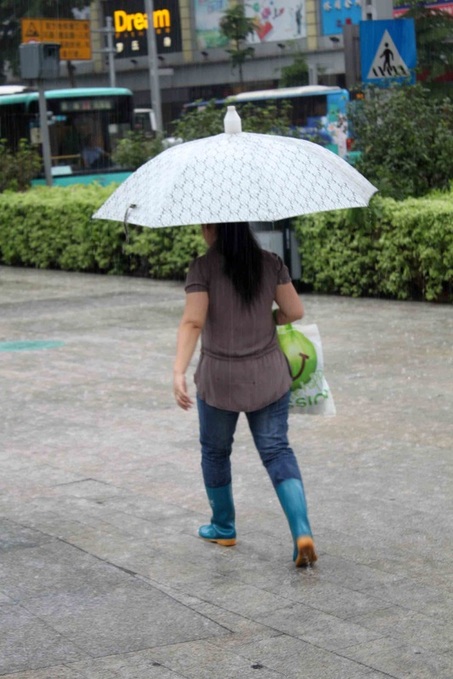
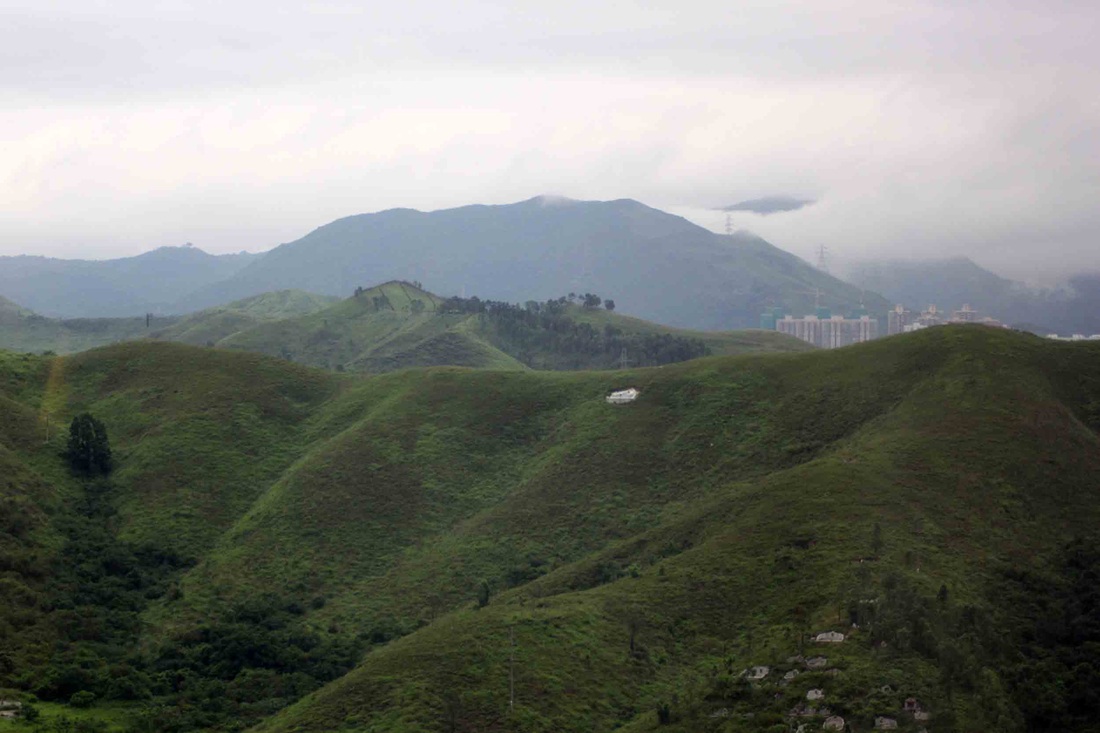



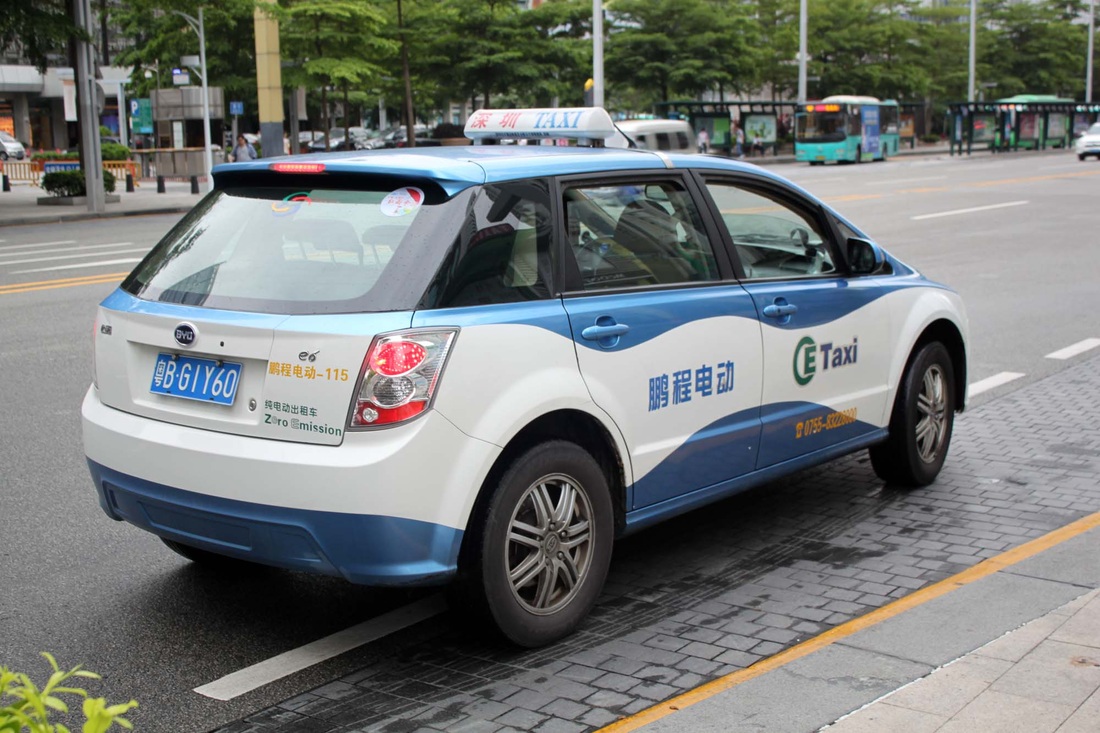


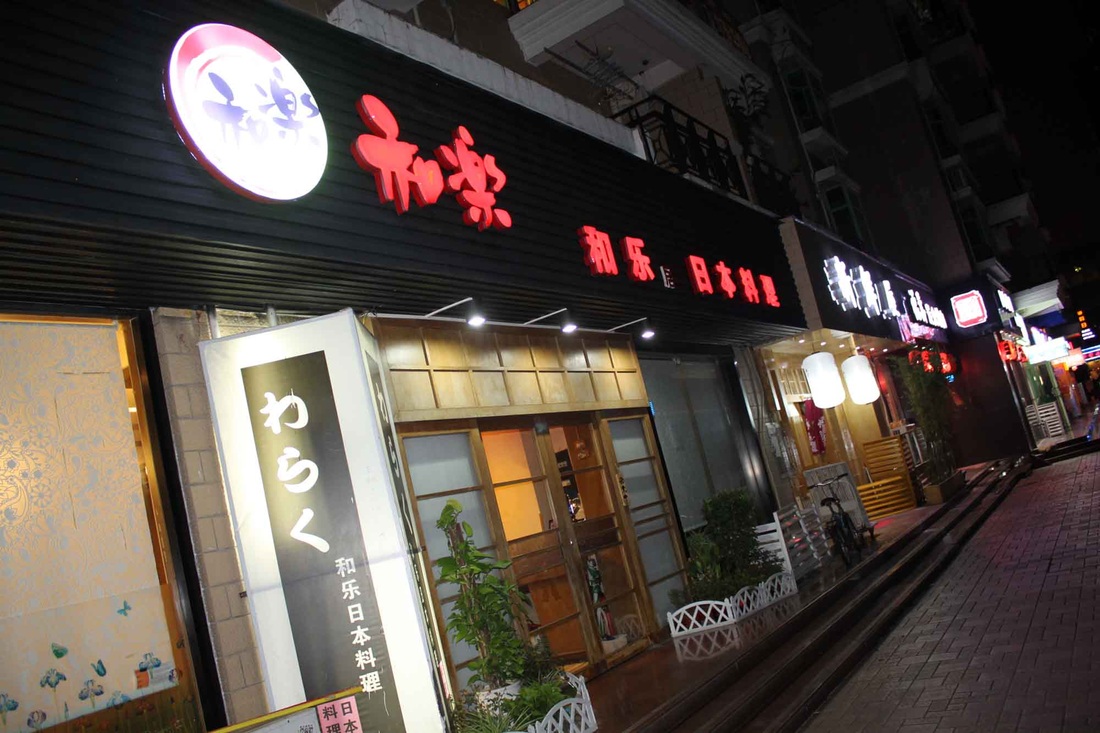




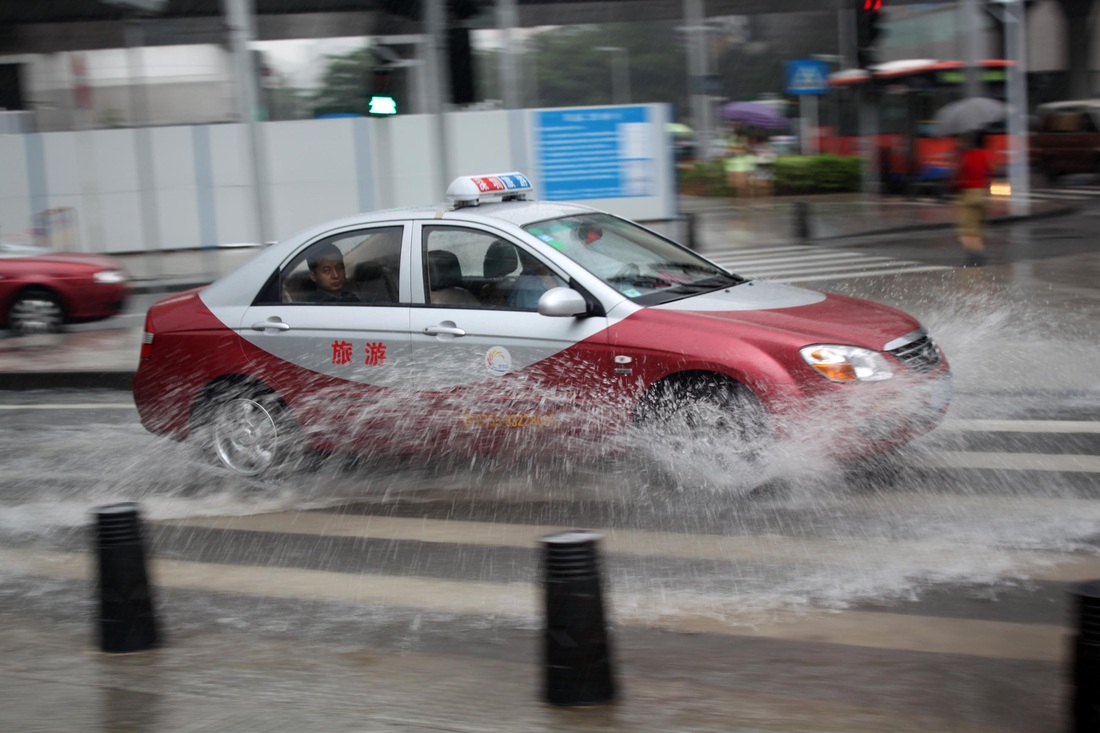




 RSS Feed
RSS Feed


